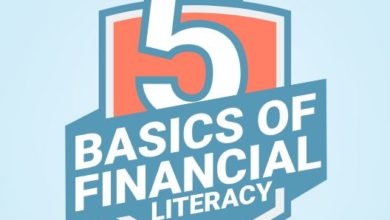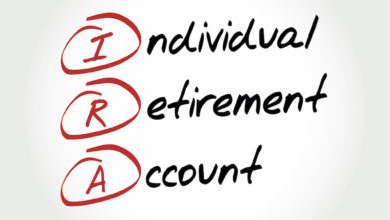The Sequence of Returns
Understand How It Can Impact Your Retirement Savings & Success

What exactly is the “sequence of returns”? The phrase describes the yearly variation in an investment portfolio’s rate of return. But what kind of impact do these deviations from the average return have on a portfolio’s final value? How can it affect your retirement savings?
Let’s take a closer look at a few different investment scenarios. The first few scenarios focus on how market volatility affects a portfolio while assets are accumulating, and the last scenario focuses on how market volatility affects a portfolio from which distributions are being taken.
One study found the sequence of returns appears manageable during accumulation. An analysis from BlackRock compared three model investing scenarios: three investors start portfolios with lump sums of $1 million, and each of the three portfolios averages a 7% annual return across 25 years.
In two of these scenarios, annual returns ranged from a hypothetical -7% to +22%. In the third scenario, the return is simply 7% every year. In all three situations, each investor accumulates the same total of $5,434,372 after 25 years. This is because the average annual return is a hypothetical 7% in each of the three portfolios.1
It’s important to remember that investing involves risks, and investment decisions should be based on your own goals, time horizon, and risk tolerance. The return and principal value of investments will fluctuate as market conditions change. When sold, investments may be worth more or less than their original cost.
The BlackRock study assumes that the three hypothetical investors evaluated their financial ability to continue making purchases through periods of declining and rising prices.
When you shift from asset accumulation to asset distribution, the story can change. There is the risk that your distribution strategy could coincide with a period of declining prices, which may present a challenge.
The IFW Retirement Roadmap Live Webinar Can Help You Understand & Protect Yourself From This Risk
In an extreme illustration, consider the 2007-2009 bear market. In this example, a hypothetical investor entered 2008 with a $1 million portfolio and held 60% in equities and 40% in fixed-income investments. The investor was preparing to retire in 12 months, on December 31, 2008.
During 2008, the bond market, as measured by the S&P U.S. Aggregate Bond Index rose 5.7%, but the stock market, as measured by the S&P 500 Index, lost 37.0%. The $1 million portfolio ended the year with a balance of $800,800.2,3
If the hypothetical investor started taking distributions in January 2009, they would be starting from a smaller portfolio balance and they may not have the opportunity to rebuild the principal that was lost in the prior 12 months.
If you are preparing to retire, having an understanding of the sequence of returns may help you ask important questions about your overall investment strategy.
###
Learn More About IFW’s Retirement Planning Education Services
The IFW provides valuable financial education, resources, and services that help people live their best life.
Please remember, be mindful of the messenger that positions certain products or services as “always” bad or “always” perfect. The fact of the matter is there are no “bad products” or “perfect products”. The right product is the one that aligns with your goals and objectives.
The Institute of Financial Wellness believes when it comes to financial decisions; never say “Never” never say “Always”…It Depends.
1. Blackrock.com, 2020
2. Kiplinger.com, 2018. The S&P U.S. Aggregate Bond Index measures the performance of publicly issued U.S. dollar denominated investment-grade debt. Index performance is not indicative of the past performance of a particular investment. The market value of a bond will fluctuate with changes in interest rates. As rates rise, the value of existing bonds typically falls. If an investor sells a bond before maturity, it may be worth more or less than the initial purchase price. By holding a bond to maturity, an investor will receive the interest payments due plus your original principal, barring default by the issuer. Investments seeking to achieve higher yields also involve a higher degree of risk.
3. The S&P 500 Composite Index is an unmanaged index that is considered representative of the overall U.S. stock market. Index performance is not indicative of the past performance of a particular investment. Past performance does not guarantee future results. Individuals cannot invest directly in an index. The return and principal value of stock prices will fluctuate as market conditions change. And shares, when sold, may be worth more or less than their original cost.
The content is developed from sources believed to be providing accurate information. The information in this material is not intended as tax or legal advice. It may not be used for the purpose of avoiding any federal tax penalties. Please consult legal or tax professionals for specific information regarding your individual situation. This material was developed and produced by FMG Suite to provide information on a topic that may be of interest. FMG, LLC, is not affiliated with the named broker-dealer, state- or SEC-registered investment advisory firm. The opinions expressed and material provided are for general information, and should not be considered a solicitation for the purchase or sale of any security. Copyright 2021 FMG Suite.
Rees Bridges brings a unique value to the IFW as both a highly accomplished creative professional and a successful financial services executive to serve in his role as Senior VP, Marketing & Communications.
Over the last decade Rees has served as the lead marketing & communications professional for a Fortune 500 Financial Services firm. He oversaw all advisor marketing strategies, client communications, and the entire firms branding and marketing initiatives.
Rees continues to pursue his passions as a creative professional & musician for over 30 years, with an impressive profile and reputation as a designer, performer, teacher, and studio musician. Here is a little secret: He serves in the role as an international clinician for Mapex drums, Paiste Cymbals and held the record for world’s fastest drummer between 2006 and 2007.
Rees grew up in London, England and currently resides in Miami, Florida. When not at work, he enjoys spending time with family and friends, traveling, and indulging in his passions for music and creative pursuits.






